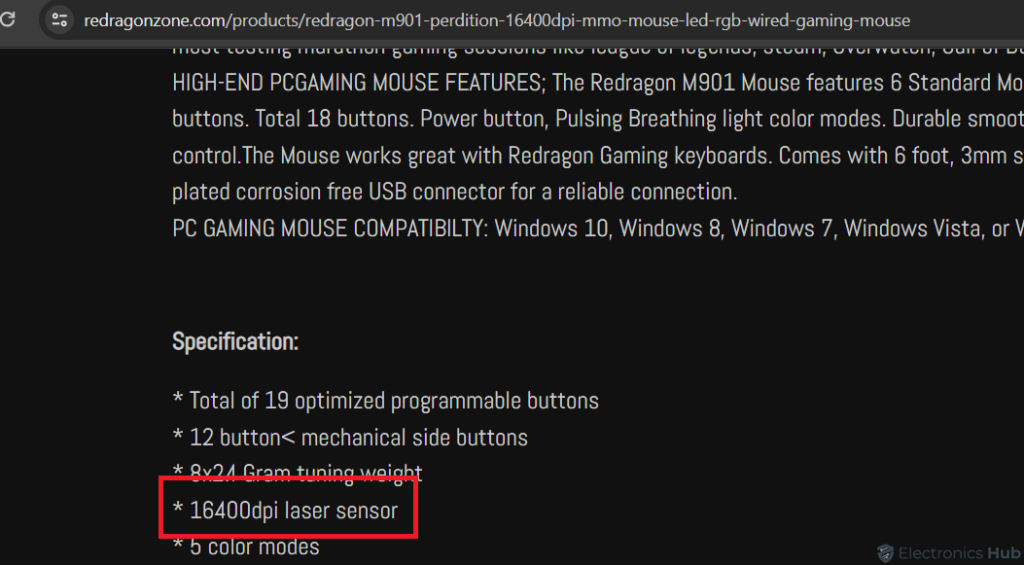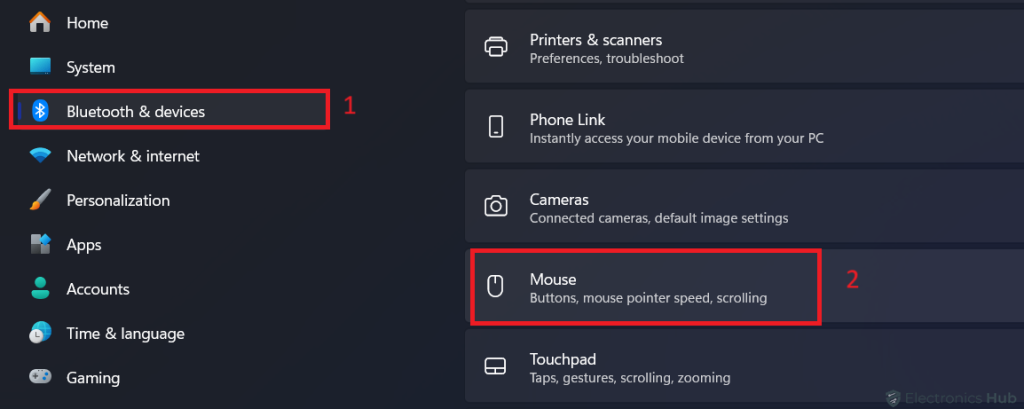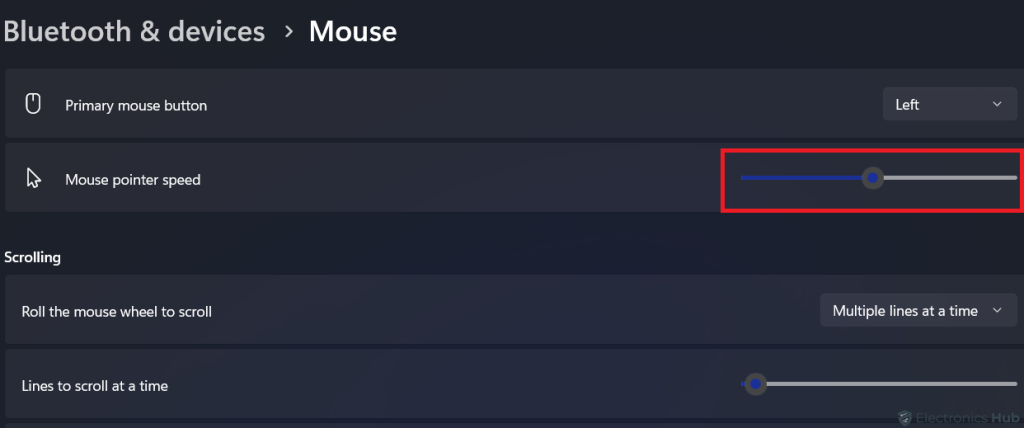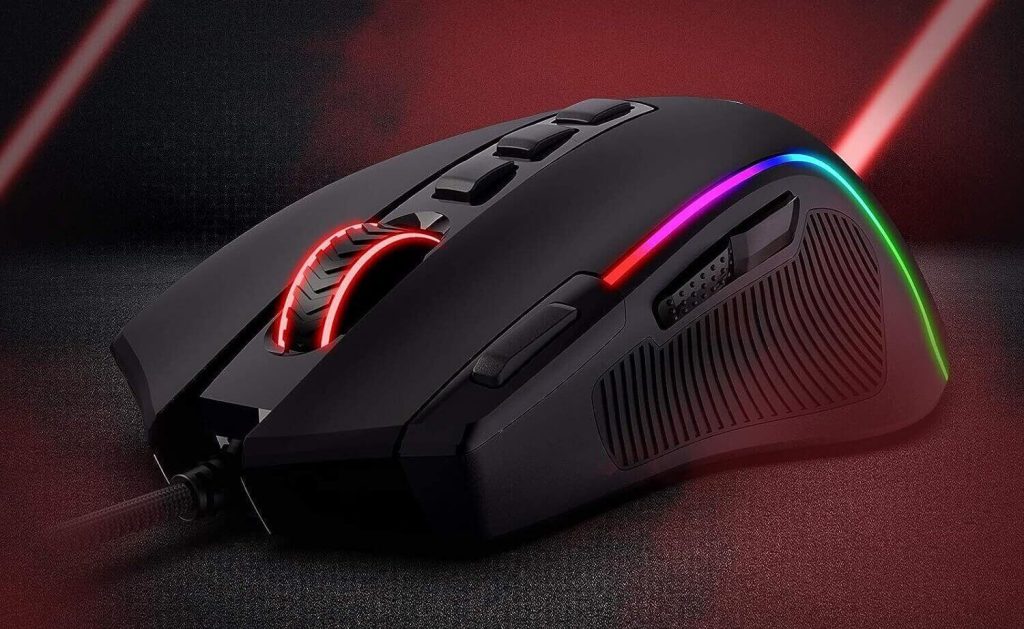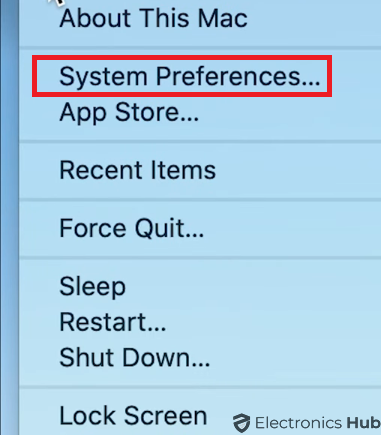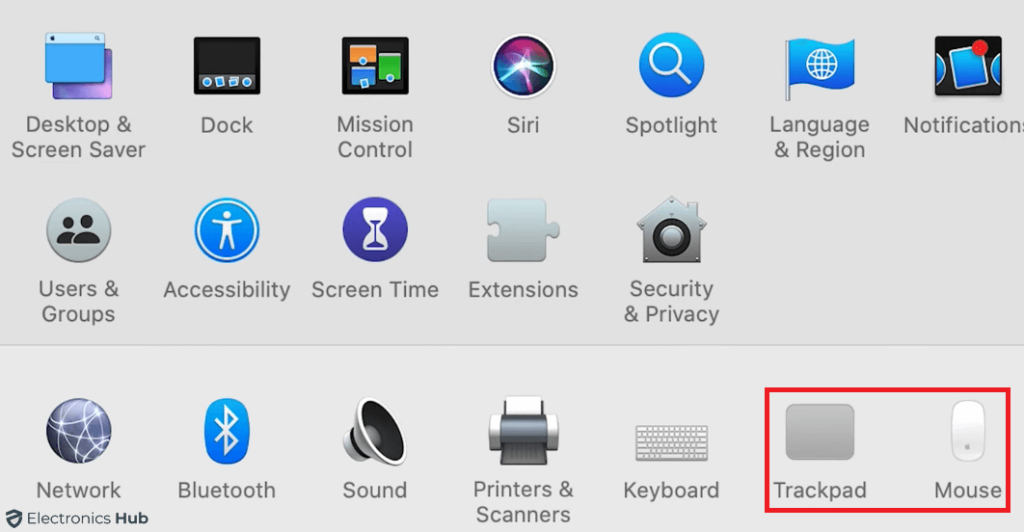DPI, or dots per inch, stands as a pivotal setting dictating your computer mouse’s sensitivity. The allure of changing a mouse’s DPI lies in its potential to transform your computing encounters—be it refining gaming accuracy or elevating everyday productivity tasks. In this digital era, the mouse isn’t merely a peripheral; it’s an embodiment of precision, versatility, and customization to suit your preferences. One such customizable aspect is the sensitivity, governed by the DPI setting. Understanding how to tweak this setting grants you the power to tailor your mouse’s sensitivity to your exacting needs, whether it’s for speed or precision.
Delving into the depths of DPI, it’s crucial to grasp its significance—it’s the metric that determines how far your on-screen cursor moves in response to physical mouse movements. This fundamental aspect can be personalized, offering you a smoother, more responsive interaction with your device. A pressing question often arises: What’s the optimal DPI for me? The answer pivots on your usage—artists favor lower DPI for intricate drawing tasks, while avid gamers and multitaskers may lean towards heightened cursor agility, embracing a faster movement across the screen.
Outline
ToggleWhy to Change the DPI of a Mouse?
Changing the DPI (dots per inch) of a mouse is not a mere technical adjustment; it’s a strategic move that aligns the device with your specific needs. The primary motivation often stems from the pursuit of improved accuracy and responsiveness, especially in the realm of gaming. Gamers, for instance, may prefer higher DPI settings for swift cursor movements, essential in fast-paced gameplay scenarios. On the contrary, lower DPI settings might be favored by graphic designers or artists aiming for meticulous precision in their work.
Beyond gaming and creative tasks, everyday computer users may find altering DPI beneficial for general productivity. A higher DPI setting allows the cursor to cover more screen real estate with minimal physical movement, facilitating efficient navigation across large displays. Conversely, reducing DPI can enhance precision during tasks that require fine control, such as detailed document editing or photo retouching. In essence, changing the DPI transforms the mouse from a generic tool to a personalized instrument, adapting seamlessly to your preferred level of sensitivity for various computing activities.
How to Check the DPI of A Mouse?
Before delving into altering your mouse’s DPI, it’s essential to determine its current sensitivity level. Checking the DPI serves as a crucial initial step, allowing you to understand the baseline and make informed adjustments tailored to your preferences. There are several methods available to ascertain the DPI setting of your mouse, each offering unique insights into its sensitivity.
Through Manufacturer’s Specifications
One of the primary ways to determine the DPI of your mouse is by referring to the manufacturer’s specifications. Manufacturers often provide this information either on the product packaging or through their official website. It’s usually listed as a specific DPI range or a fixed DPI setting that the mouse is designed to operate within.
To find this information, locate the product details or specifications section on the packaging if available. If not, visiting the manufacturer’s website and navigating to the product page or support section can provide detailed specifications, including the DPI range or fixed DPI setting of your mouse model. This method offers an accurate and reliable way to know the default DPI setting of your mouse, serving as a valuable reference point for any adjustments you may consider making.
Through Correct Mouse Driver Softwares
Another precise method to check the DPI of your mouse involves using the correct mouse driver software. Many mouse manufacturers provide dedicated software that allows users to not only check the current DPI setting but also customize it according to their preferences.
Follow these steps:
- Identify Your Mouse Model: Note down the exact model of your mouse. This information is often available on the product itself or its packaging.
- Download and Install: Visit the official website of your mouse’s manufacturer and download the relevant driver software compatible with your operating system.
- Open the Software: Launch the installed software and navigate to the settings or configuration section dedicated to your mouse.
- Check DPI Settings: Within the software interface, look for an option labeled “DPI settings” or something similar. This section typically displays the current DPI setting or range available for your mouse model.
- View DPI Details: Some software may provide a specific numeric value for the DPI setting, while others might display a range or presets that can be adjusted.
Using the mouse driver software ensures access to accurate and detailed information about the DPI settings of your mouse, allowing for precise customization based on your preferences.
By Using Paint Application
Using Paint, a basic graphics application available on most Windows operating systems, provides a simple yet effective way to estimate the DPI of your mouse. Follow these steps:
- Open MS Paint: Begin by searching for MS Paint in your taskbar or list of applications and open the program.
- Set Zoom Level to 100%: Ensure that the zoom level is set to 100% to maintain accuracy in your measurements.
- Select Brush Tool: Choose any brush tool within MS Paint, and position your cursor at the far-left edge of the screen. Confirm that the first number in the bottom-left corner reads 0.
- Measure Movement: Hold down the left mouse button and move your mouse approximately 2-3 inches to the right without lifting or changing the cursor’s position. Focus on the first number in the bottom-left corner without any additional mouse movement and make a note of the displayed value.
- Repeat and Average: Repeat this process multiple times to gather several measurements. Once done, find the average of each recorded value. This averaged number represents the DPI (dots per inch) of your mouse.
How to Change the DPI of a Mouse?
Customizing the DPI (dots per inch) setting of your mouse empowers you to fine-tune its sensitivity to match your specific preferences and needs. Whether you seek lightning-fast cursor movements for gaming or precision control for design tasks, adjusting the DPI level enables you to optimize your mouse’s performance. There are various methods available to modify the DPI settings, offering flexibility and control over your mouse’s responsiveness.
Change DPI by System Settings
Altering the DPI of your mouse through system settings is a fundamental approach that ensures a consistent sensitivity level across all applications. System settings provide a centralized control point for adjusting mouse properties, allowing users to customize the DPI based on their preferences. Follow these steps to modify the DPI via system settings:
- Open Settings: Press Windows Key + I to launch the Windows 11 Settings app.
- Navigate to Mouse Settings: In the sidebar, select “Bluetooth and devices” and click on “Mouse.”
- Adjust Mouse Pointer Speed: Within the Mouse settings, locate the “Mouse pointer speed” option. Drag the slider to the right for faster mouse movements or to the left for slower movements. The default value, typically in the middle, provides a balanced sensitivity.
Note: For Windows 10, after clicking “Mouse” in the “Bluetooth and devices” section, click “Additional mouse options.” Then, navigate to “Pointer options.” Within the “Motion” section below “Select a pointer speed,” adjust the slider to modify the mouse DPI. Moving it left reduces DPI for slower cursor movement. Click “Apply” and then “OK” to confirm the changes, ensuring the new DPI settings take effect.
Modifying DPI via system settings offers a convenient way to tweak your mouse’s sensitivity directly through your operating system’s configuration options, providing an immediate impact on cursor movement speed.
Change DPI by Mouse Buttons
Adjusting DPI using mouse buttons is a feature commonly found in advanced or gaming mice. Many of these mice come equipped with dedicated buttons that allow users to switch between preset DPI settings on the fly. Typically, these buttons are located near the mouse wheel or on the side of the mouse.
By pressing these designated DPI buttons, users can cycle through predefined DPI levels. Each button press may correspond to a different DPI setting, allowing for quick and seamless adjustments to suit various tasks or preferences. The ability to change DPI instantly through mouse buttons offers a convenient and immediate way to modify sensitivity without needing to access software or system settings.
Change DPI by Game Settings
Adjusting DPI through game settings is a prevalent practice among gamers who require different sensitivity levels for various in-game scenarios. Many modern games offer options to customize mouse sensitivity or DPI within their settings menus.
- Launch the Game: Open the game in which you want to adjust the DPI settings.
- Access Game Settings: Look for the in-game settings menu or options related to mouse or controls.
- Locate Mouse or Sensitivity Settings: Within the settings menu, find the section dedicated to mouse sensitivity or DPI adjustments.
- Adjust DPI: Depending on the game, you may find sliders, numerical values, or presets to modify the mouse DPI. Increase or decrease this setting according to your desired sensitivity level.
- Apply Changes: After adjusting the DPI settings to your preference, save or apply the changes within the game settings.
Changing DPI through game settings provides a tailored approach to mouse sensitivity for specific gaming experiences, allowing gamers to fine-tune their mouse responsiveness based on individual gaming preferences or requirements.
How to Change the DPI of a Mouse on Mac?
Modifying the DPI (dots per inch) settings on a Mac involves accessing the System Preferences, providing users with the ability to adjust mouse sensitivity directly through the operating system. Here’s how to change DPI on a Mac:
- Open System Preferences: Access the System Preferences on your Mac.
- Select Trackpad or Mouse: If you are using a MacBook, choose “Trackpad”; if you have an external mouse connected, select “Mouse.”
- Adjust Tracking Speed: In the relevant section, usually labeled “Tracking speed,” utilize the slider to modify the sensitivity of your mouse or trackpad. Moving the slider to the right increases sensitivity (faster movement), while moving it to the left decreases sensitivity (slower movement).
Changing the DPI on a Mac is a straightforward process within the System Preferences, allowing users to quickly customize mouse sensitivity based on their preferences or specific tasks.
Change Mouse DPI – FAQs
Ans: DPI stands for Dots Per Inch, and it measures the sensitivity of a mouse. Higher DPI settings mean the cursor will move more on the screen with less physical movement of the mouse.
Ans: Most modern operating systems (Windows, macOS, Linux) support changing mouse DPI, but the methods and available settings might vary.
Ans: For Windows users, go to the Control Panel > Hardware and Sound > Devices and Printers. Right-click on your mouse and select ‘Mouse settings.’ Look for a tab related to DPI or sensitivity.
Ans: Higher DPI is often preferred for gaming, as it allows for quicker and more precise movements. However, it’s a matter of personal preference, and some gamers prefer lower DPI for better control.
Conclusion
In conclusion, understanding and customizing your mouse’s DPI unlocks a personalized computing experience. Whether through system settings, dedicated buttons, game adjustments, or Mac preferences, tailoring the cursor’s sensitivity empowers you to conquer fast-paced gaming, achieve artistic precision, or navigate large screens with ease. By mastering this crucial setting, you transform your humble mouse into an extension of your will, seamlessly adapting to your every digital endeavor.


